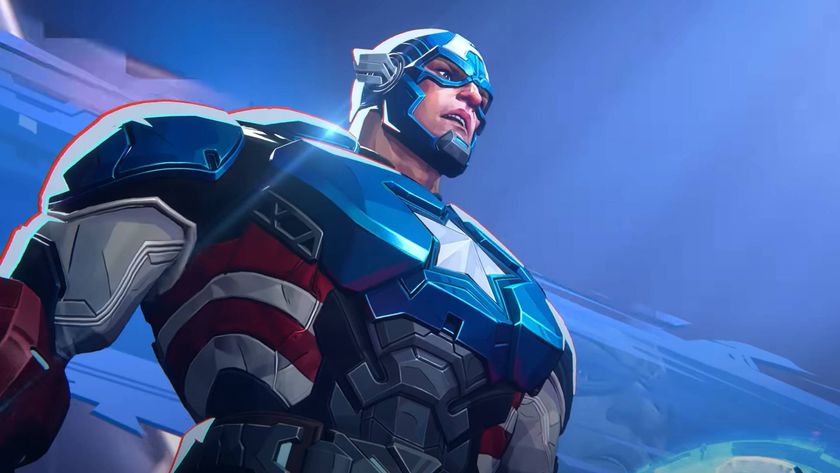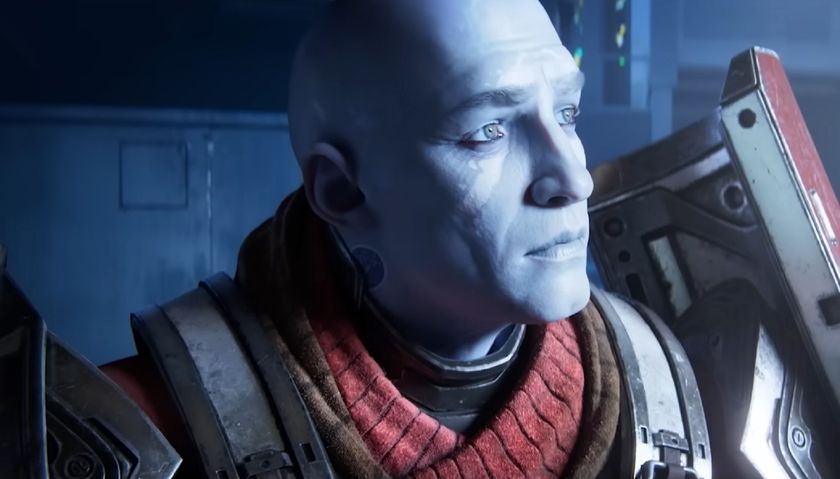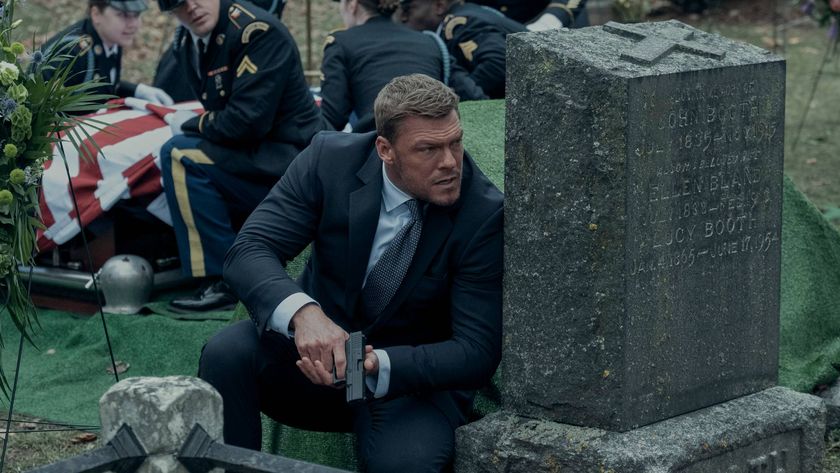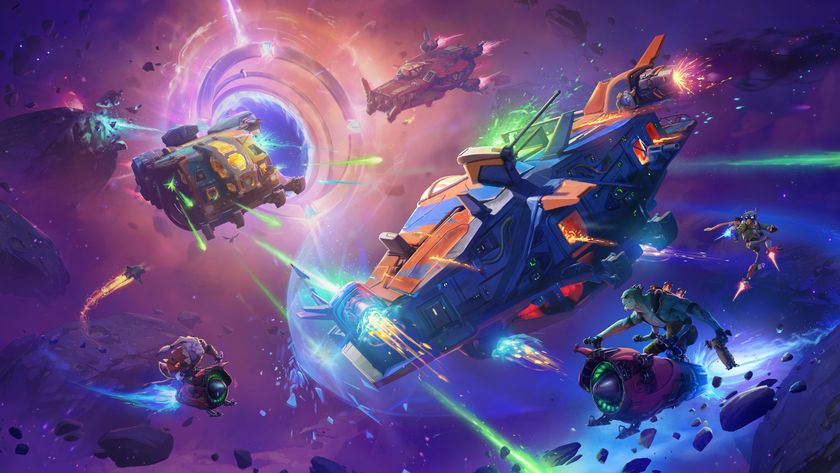Live service game fatigue is real, but can it be fixed?
The thought of adding another live service game to my rotation is daunting and indicative of an industry-wide problem

Apex Legends, Halo Infinite, Fortnite, Warzone, and Destiny 2 – live service games are more popular than ever, garnering millions of players and billions in revenue. But their ubiquity could ultimately lead to their downfall. As a live service player, I'm finding it nearly impossible to keep up with multiple games' battle passes, gun metas, and updates. On the development end, balance and consistency is often a pipe dream; to pluck just two examples out of the ether, Warzone recently buckled under the weight of another game integration, while Halo Infinite is struggling to stick to a single roadmap. Live service games might be all the rage, but it's clear that players and developers alike are still trying to figure out the particulars.
That won't likely change anytime soon. Live service games have proven to be incredibly lucrative – new microtransaction models have ushered in a new era for free-to-play gaming on console and PC – and despite a handful of high-profile failures in this space, we're seeing more publishers eagerly getting in on the action. Sony is making 10 PS5 multiplayer games by 2026, having already brought Bungie in to help strengthen the weakest part of PlayStation's portfolio. Ubisoft is bouncing back from the closure of Hyper Scape with Assassin's Creed Infinity and a reported live-service Far Cry game. Meanwhile, EA has projected that 70% of its revenue in 2021 was generated from live service titles and so it seems reasonable to predict that its investment in this space will continue to grow.
The genre is certainly here to stay, but will its omnipresence lead to growth or will it contribute to an overwhelming sense of fatigue – one that ultimately drives players back towards more traditional gaming experiences?
A juggling act


Halo Infinite needs to tap into its community of creators, and Forge is the way to do it
I'm currently rotating between Halo Infinite, Apex Legends, and Call of Duty: Warzone, but my playtime in each ebbs and flows. The surprise release of Halo Infinite multiplayer in November 2021 led to a decrease in my Apex and Warzone playtime, and that December, when Warzone first integrated with Call of Duty: Vanguard and was unplayable on my Series S, my Halo time increased even more. A few months later, Apex Legends Season 12 dropped just as 343 removed one of Halo Infinite's best modes, so Respawn's shooter pulled ahead. But no matter what I play and when, it's always overwhelming trying to return to one game or the other.
Jumping back into Warzone Season 2 after over a month away was a shock. I had no idea what the current gun meta was, didn't know my way around the new map, and wasn't aware of some of the major bugs that could ruin a match. The characters in the Battle Pass were all unknown to me, so I didn't feel compelled to shell out money for it. I felt like a bystander in Warzone, a passive onlooker getting her ass repeatedly handed to her by Operators I've never seen before with weapons I was unfamiliar with.
Returning to Apex Legends can be a similarly jarring experience, especially when the game vaults and unvaults one or two weapons a season. Before Season 12, it'd been so long since I had last consistently played that my teammates' delight at the return of the Alternator SMG confused me – I wasn't even aware it had even been vaulted. Respawn's constant adjustments to Legends also means that the character meta shifts every season, and Apex (much like many other live service experiences) doesn't do a great job of communicating these changes in-game.
But there's no live service game that feels more daunting to return to after a lengthy hiatus than Destiny 2. I want to play Destiny 2: The Witch Queen, but how can I possibly return to a game so massive in story and scope after nearly a year away? When I first picked up Destiny 2 in January 2021 I was confused but enamored, then I rapidly sank 100+ hours into it before dropping it entirely. I stopped playing because the idea of logging on multiple times a week to complete raids, check in on Xur, grab new bounties, and score a deal in the Eververse store was incredibly overwhelming. Destiny 2 unhinged its jaw and ate my free time whole, and I found myself longing for gameplay that could be enjoyed as more of a light bite.
Sign up to the 12DOVE Newsletter
Weekly digests, tales from the communities you love, and more
Here to serve you

While I may be feeling some fatigue around the Games as a Service (GaaS) model, not everybody feels the same way. In fact, Chet Faliszek, CEO and co-founder of Bombay Stray, the studio behind co-op shooter The Anacrusis, believes it was an inevitable next step for an industry that has spent a decade investing in more expensive productions and online-focused experiences. "I think GaaS is the natural progression to games. Everyone is connected, the cost of making games has gone up, and when players connect to a game – they want more," he explains. "There is just so much risk in going dark for five years and then just releasing a game without a plan of updates and working with the community."
But GaaS-oriented titles don't always strike gold. For every GTA Online there's an Anthem; for every Fortnite there's a Hyper Scape; and for every League of Legends there's a Marvel's Avengers. Success is never guaranteed, but that hasn't stopped publishers from trying. Faliszek is right to note that there's risk in releasing a game without a plan for updates and consistent community outreach, and that's especially true for live service experiences. Look at Warzone as an example, and how Raven has struggled to keep corners of the online community on its side after persistent problems patching the game up after large integrations – one problem begets another, and so on.
GaaS is the natural progression to games
Chet Faliszek, Bombay Stray
And if a live service game launches on unsure footing, it's even more likely to struggle. Anthem is an infamous example of this, launching in a less-than-stellar state which left players complaining that it was buggy and felt incomplete from day one. One of Anthem's developers reportedly told Kotaku that BioWare "had a really strong belief in the live service," so much so that when issues cropped up throughout production, higher-ups would say, "'we're a live service. We'll be supporting this for years to come. We'll fix that later on.'" While GaaS may feel like a natural progression for online gaming, Anthem is a case study in how quickly a lot of small problems can quickly become insurmountable – just two years after its launch, EA put BioWare's efforts to save the game to one side and shut development of Anthem down for good.
Successful live service games have a solid foundation that is iterated upon time and time again as they age, by a dev team that is vocal and communicative about future plans and road maps. When live service games launch in a diminished state, or do a complete 180 from what was initially promised, players will most likely reject it. As players become more familiar with GaaS, questions around best practice of microtransactions, balance, and live updates become more commonplace – which puts games like Warzone back under the microscope, and any new titles under even more scrutiny.
Power to the players

Communication is key when it comes to the continued success of live service games. Clear roadmaps for upcoming content, and easy access to recent and historic changes to available content and weapon meta, can help players juggling multiple live service games (like myself) keep better track of what's going on. It will also help manage expectations – many Halo Infinite players were frustrated with a perceived lack of communication from 343 Industries while they waited for new content. Communication and clarity is key to the future of the live service model.
"I think one of the missing parts is the communication part with the community. It's hard. But often players do not feel they are being listened to or that the only way to communicate is in negative ways, so we work hard at trying to communicate clearly and really listen to the feedback," Faliszek explains. "Players are understanding if you are honest and clear with them."
The ongoing growth and success of live service games means players' relationships with GaaS, and with the microtransactions which are so essential to that model functioning, are changing. This is just one reason why studios need to pay more attention to the way they are positioning elements like Battle Passes or premium unlocks than ever before. "Players are pretty smart, so while there may be versions that are just about monetization, about wanting to make money off of the community playing the game, I don't think any of those last in the PC/console space and they get adjusted," Faliszek suggests.
Players are understanding if you are honest and clear with them
Faliszek
One area I'd like to see publishers be more conscious of with respect to fighting live service fatigue is when and how they're asking for money from players. Microtransactions are the lifeblood of free-to-play service games, but it's easy for them to invite backlash, too. Just look at the response to the premium Roze skin in Warzone, which let players become imperceptible in shadow if they opened up their wallets. Or how Marvel's Avengers introduced paid XP boosts after Square Enix not only promised that there would only be cosmetic-only microtransactions, but slowed the rate of organic progression through the game. And there's a reason why a Reddit response from EA regarding Star Wars Battlefront microtransactions has over 667,000 downvotes – players were frustrated at the cost of unlocking Darth Vader, and many believed that EA's response rang hollow.
Despite all of this, now is a great time for online shooters, and some of my favorite games at the moment are live service ones. But as the genre continues to mature, and as more studios double down on the business model, we'll need to see more investment in communication, clear roadmaps, and consistent messaging to help offset a natural drop-off in attention. Right now, there's an influx of content and ever-shifting metas to sift through, making it incredibly overwhelming for anyone looking to play more than one live service game. It's up to developers to ensure that these games are stable, clearly roadmapped, and devoid of exploitative microtransactions in order to minimize live service fatigue.
I'm having fun with Warzone Season 2 despite its best efforts to keep me out
Alyssa Mercante is an editor and features writer at GamesRadar based out of Brooklyn, NY. Prior to entering the industry, she got her Masters's degree in Modern and Contemporary Literature at Newcastle University with a dissertation focusing on contemporary indie games. She spends most of her time playing competitive shooters and in-depth RPGs and was recently on a PAX Panel about the best bars in video games. In her spare time Alyssa rescues cats, practices her Italian, and plays soccer.



















When Destiny 2 "weekly active users dropped lower and faster than we'd seen since 2018," Bungie assembled an A-Team to put out some fires: "We needed to do something"

Half-Life devs worried Gabe Newell "promised things that they couldn't possibly deliver" for the iconic FPS, but "they just didn't know" that they'd be able to do it yet






